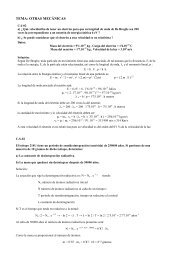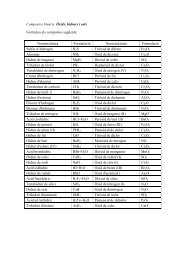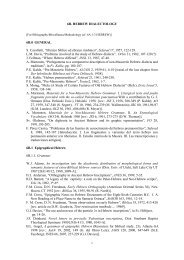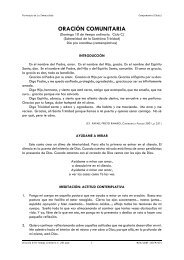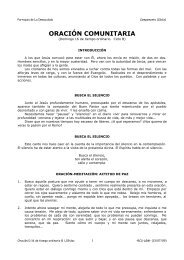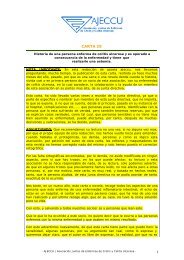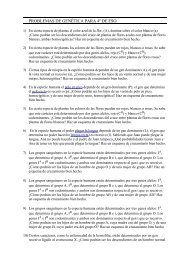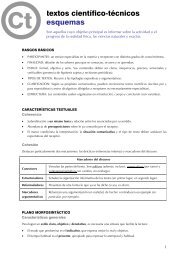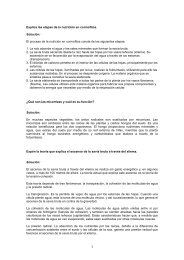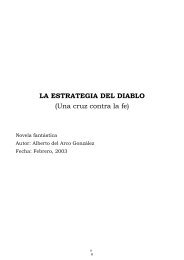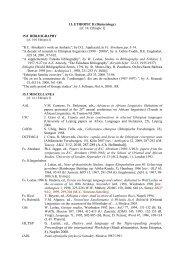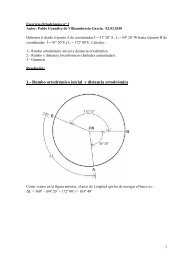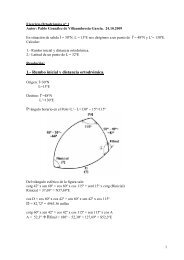Create successful ePaper yourself
Turn your PDF publications into a flip-book with our unique Google optimized e-Paper software.
8.12.1.2.4. Adverbs and Particles<br />
F. Aspesi: “Alcune osservazioni sul l- di accusativo in aramaico”, A. Loprieno, ed., Atti della quinta<br />
giornata comparatistica, Peruggia 1991, pp. 1-18.<br />
J.A. Emerton: “New evidence for the use of waw consecutive in Aramaic” - VT 44/2, 1994, 255-258.<br />
M.L. Folmer, “Instances of so-called (k)zy-recitativum in Aramaic texts from the Achaeminid period”,<br />
DS-ELL 2, 1996, 145-155.<br />
T. Muraoka, M.F. Rogland, “The waw consecutive in Old Aramaic?: a rejoinder to Victor Sasson”, VT<br />
481, 1998, 99-104.<br />
V. Sasson, “Some observations on the use and original purpose of the waw consecutive in Old Aramaic<br />
and Biblical Hebrew”, VT 47, 1997, 111-127.<br />
8.12.1.3. SYTAX AD STYLISTICS<br />
F. Díaz Esteban, “Una fórmula de cortesía epistolar de Ugarit, repetida en una carta judeoaramea del siglo<br />
v a. C.”, Sefarad 22, 1962, 101-102.<br />
J. C. Greenfield-A. Shaffer, “Notes on the curse formulae of the Tell Fekherye inscription”, RB 92, 1985,<br />
47-59.<br />
M.Z. Kaddari, “Construct state and dī-phrases in Imperial Aramaic”, in PICSS, pp. 102-115.<br />
B. Otzen, “Petitionary formulae in the Aramaic inscriptions from Hama”, ZAW Suppl. 100, 1988, 233-243.<br />
B. Porten, “Structure and chiasm in Aramaic contracts and letters”, in J.W. Welch, ed., ChiA, pp. 169-182.<br />
H. Tawil, “A curse concerning crop-consuming insects in the Sefîre treaty and in Akkadian: a new<br />
interpretation”, BASOR 225, 1977, 59-62.<br />
H. Tawil, “Some literary elements in the opening sections of the Hadad, Zakir, and the Nerab IIi<br />
inscriptions in light of East and West Semitic royal inscriptions”, Or 43, 1974, 40-65.<br />
A. Sima, “Zu Formular und Syntax der alt-aramäischen Inschrift aus Bukan (um 700 V. Chr.)”,<br />
MLR 14, 2002, 113-124.<br />
B.A. Strawn, “Who’s Listening to Whom? A Syntactical Note on the Melqart Inscription?”, UF 37, 2005,<br />
621-641.<br />
8.12.1.4.. LEXICOGRAPHY<br />
8.12.1.4.0. General<br />
J. C. Greenfield-A. Shaffer, “Notes on the Akkadian.-Aramaic bilingual statue from Tell Fekherye”, Iraq<br />
45, 1983, 109-116.<br />
J.C. Greenfield, “Aramaic. II. Iranian loanwords in Early Aramaic”, in Eh. Yarshater, ed., Encyclopaedia<br />
Iranica. Vol. II, London 1987-, pp. 256-259.<br />
P. Grelot, “On the root c bq/ c bz,. in ancient Aramaic and in Ugaritic”, JSS 1, 1956, 202-205; 2, 1957, 195.<br />
F. Israel, “Osservazioni linguistiche all’iscrizione di Tell Fekheriye”, ASGM 24, 1083, 78-83.<br />
L. Kogan, “Lexicon of the Old Aramaic Inscriptions and the Historical Unity of Aramaic”, in Fs.<br />
Diakonoff 2005, pp. 513-566.<br />
T. Muraoka, “Linguistic notes on the Aramaic inscription from Tel Dan”, IEJ 45, 1995, 19-21.<br />
E. Puech, “Les inscriptions araméennes I et II de Sfiré: nouvelles lectures”, RB 89, 1982, 576-587.<br />
H. Tawil, Idioms in Old Aramaic Royal Inscriptions in the Light of Akkadian, Diss., 19i72, Columbia<br />
Univ. [DAB 33/6, Dec. 1972, 2907-A].<br />
J.W. Wesselius, “Notes on Aramaic magical texts”, BiOr 39, 1982, 249-251 [1. The incantation in<br />
cuneiform script from Uruk. 2. The creeping demons].<br />
19




